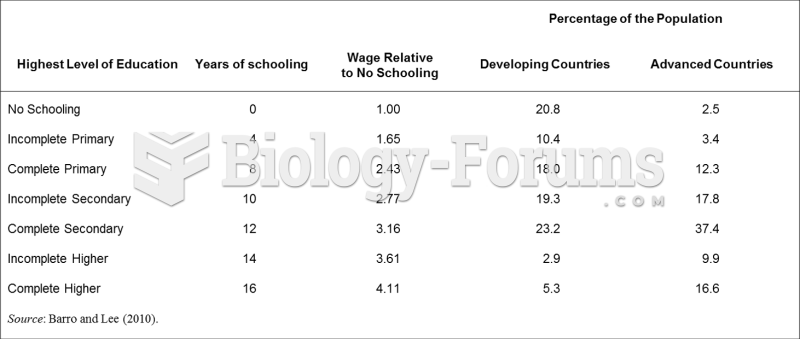Answer to Question 1
Answer: Urbanization is the process by which the populations of urban settlements grow. This can be measured in two ways: the absolute numbers of people living in cities, or the percentage of a population that lives in cities. Developed countries have a higher percentage of urban residents, but developing countries have more of the very large urban settlements. Seven of the ten most populous cities are in developing countries.
Identifying the world's largest cities is difficult, because each country defines cities in a unique manner. According to Demographia, 171 urban areas have at least 2 million inhabitants, 105 at least 3 million, 55 at least 5 million, 22 at least 10 million, and 4 (Tokyo, Jakarta, New York, and Seoul) at least 20 million. That developing countries dominate the list of largest urban settlements is remarkable because urbanization was once associated with economic development. In 1900, after diffusion of the Industrial Revolution from Great Britain to continental Europe and North America, all ten of the world's largest cities were in developed countries.
Answer to Question 2
Answer: The world's population of urban settlements exceeded that of rural settlements for the first time in human history in 2008. The percentage of people living in cities increased from 3 percent in 1800 to 6 percent in 1850, 14 percent in 1900, and 30 percent in 1950.
A large percentage of people living in urban areas is a measure of a country's level of development. Three-fourths of people live in urban settlements in developed countries, compared to about two-fifths in developing countries. The major exception to the global pattern is Latin America, where the urban percentage is comparable to the level of developed countries.
The higher percentage of urban residents in developed countries is a consequence of changes in economic structure during the past two centuries; first the Industrial Revolution in the nineteenth century and then the growth of services in the twentieth century. During the past 200 years rural residents in developed countries have migrated from the countryside to work in the factories and services that are concentrated in cities.







